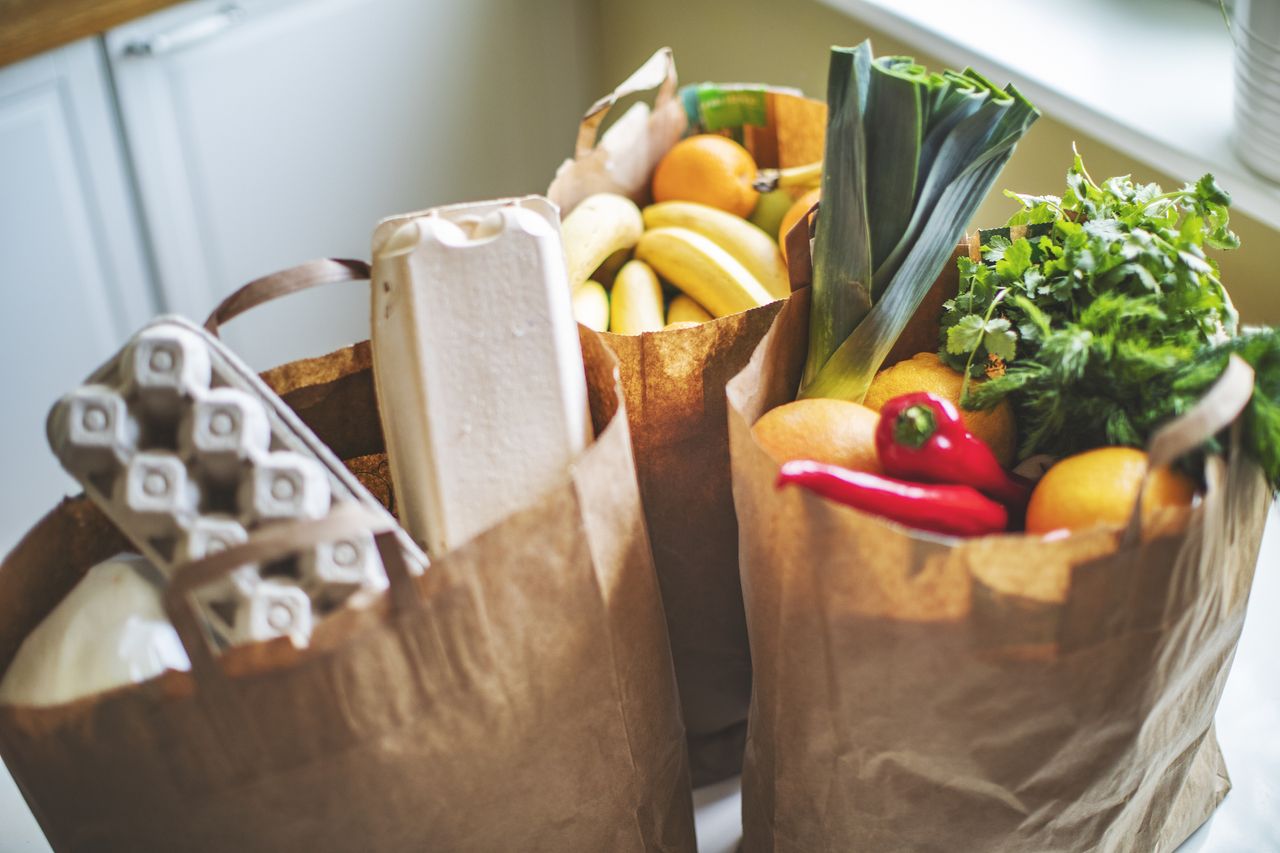
As if grocery prices weren’t high enough, some states levy a “food tax” which adds an extra financial burden on families.
As many as 18 million households experience food insecurity in the U.S., according to the latest government data, with another 6.8 million unable to afford enough groceries due to insufficient funds. Although 82.1% of the U.S. population can afford food, rising grocery prices in 2025 could cause a shift in those numbers.
Some folks have it worse than others, as a handful of states continue to charge a food tax, sometimes adding up to 10% or more at the checkout. That means some families spend more than $10 on sales tax for every $100 of groceries they buy.
If you live in one of these states, you could be paying significantly more on your grocery bill, which can quickly add up for families already feeling the effects of inflation.
Here’s a look at which states still have a food or grocery sales tax in 2025.
(Note: Local sales tax may still apply in some states that have exempted groceries at the state level.)
Food Tax
Why states tax groceries
Grocery taxes can generate significant revenue for states, which is allocated and often used, to fund essential departments such as education and transportation.
Of the 10 states that still tax groceries, less than a handful impose reduced rates.
Additionally, two recently states eliminated their grocery taxes — with one having repealed its tax this year.
- Some states offer a grocery tax credit that helps offset taxes paid throughout the year.
- Lawmakers in several states have introduced bills to reduce or eliminate taxes on groceries over the past few years.
Here are the states that still impose a statewide tax on groceries as of January 2025.
Alabama
Alabama still taxes groceries, but the state passed legislation that would reduce Alabama's grocery tax by 2%. The first 1% cut went into effect last September, reducing the state's tax rate from 4% to 3%.
The second 1% tax cut would have been imposed on Sept. 2024, according to the Alabama Policy Institute, but was not issued because target growth in the Education Trust Fund was not met. As of 2025, Alabama’s state grocery tax stands at 3%.
Overall, the food tax reduction doesn’t apply to local tax jurisdictions. So, in areas where the local and combined sales tax rate is 10% (such as Montgomery), Alabama residents still pay a 9% tax when they visit the grocery store.
Arkansas
In Arkansas, the sales tax on groceries is reduced to 0.125%. This is the lowest tax rate of the states that tax groceries, and accounts for about $10 million in annual revenue.
That being said, the state does impose a 6.5% sales tax on most purchases outside of groceries.
Gov. Sarah Sanders said in her State of the State address that she wanted lawmakers to eliminate the grocery tax. However, no plan has been set to achieve the proposal.
A bill to eliminate this "food tax" was introduced two years ago but never passed the Arkansas House or Senate.
Hawaii
Although Hawaii doesn’t technically have a sales tax, the state does have an excise tax, which is passed to consumers and reflected in retail prices.
This tax applies to groceries. The tax rate averages 4% in Hawaii, according to Tax Foundation data.
However, eligible residents may claim a Hawaii grocery tax credit to help offset the tax on groceries. There are several requirements for claiming the state's grocery tax credit, and federal adjusted gross income (AGI) is a factor.
- For the previous tax year, single filers with an AGI of $40,000 or more ($60,000 for joint filers) couldn’t claim the credit.
- Those those listed to claim the credit, must have been in Hawaii for more than nine months of the taxable year to be eligible.
Idaho
Idaho taxes groceries at the full 6% state sales tax rate. However, the state offers a grocery tax credit. The refund averages $120 for most Idaho residents, according to the Idaho State Tax Commission.
Idahoans may also receive a credit for each qualifying dependent. Part-year residents may receive a partial grocery tax credit.
Illinois
Illinois currently has a 1% state tax on grocery items, but changes are on the horizon.
- Starting January 1, 2026, Illinois will eliminate the 1% sales and use grocery tax food intended to be consumed off-premises.
- The tax break doesn't include alcoholic beverages, foods infused with adult-use cannabis, soft drinks, candy, or food prepared for immediate consumption.
Still, local governments will have the option of imposing the 1% tax by ordinance.
This isn't the first time Illinoisans have had tax-free groceries. The state temporarily rolled back its 1% rate on food tax for one year, which ended on July 1, 2024.
The expiration of the grocery tax suspension came at a bad time for many state residents since Illinois increased its already high gas tax the same day, along with several other states that increased gas taxes on July 1.
Mississippi
Mississippi recently reduced its sales tax on groceries in July, from 7% to 5%.
The decrease follows a measure that passed earlier this year, which is set to reduce the tax to 2.5% by 2036, decreasing by 0.2% annually. Still, some lawmakers are unsure whether lowering grocery taxes will support revenue growth.
Separately, efforts to reduce the state’s income tax have also been successful. As a result, some Mississippians began paying less income tax last year.
Missouri
Missouri is another state with a reduced tax on groceries. The state currently imposes a 1.225% food sales tax, but cities and counties can charge their own sales tax rates.
Local tax rates alone can exceed 8% in some areas of the state, according to the Tax Foundation.
According to local reports, some Missouri lawmakers are considering eliminating the grocery tax to support low-income families.
However, the tax alone generated $1 billion in revenue during fiscal year 2024, which has pushed other lawmakers to consider gradually reducing state sales over several years.
No concrete proposals have been pushed forward, so for now, Missourians are stuck with grocery taxes.
South Dakota
A four-year “tax holiday” reduces South Dakota’s sales tax rate, including the tax on groceries, from 4.5% to 4.2%. This temporary tax cut took effect on July 1, 2023.
Some South Dakota lawmakers want to repeal the state’s grocery tax, but efforts have so far failed.
Voters had the chance to decide on the measure during the 2024 Election, however, they turned down the opportunity to repeal the tax.
Tennessee
Tennessee’s tax on groceries is 4%, but local jurisdictions can add up to 2.75% in local sales taxes.
Two years ago, state residents received a three-month break from the state-wide sales tax on food ending in October.
WKRN reported that Tennessee families were able to save at least $100 during the three-month break for tax-free groceries. If the state eliminated its 4% tax rate on grocery items, the average family could save up to $400 annually.
Utah
Although the state’s portion of the grocery tax is 1.75%, Utah residents are charged a 3% tax on groceries statewide. A bill passed by lawmakers would eliminate the 1.75% state portion of the tax.
However, for this change to take effect, voters had to approve the measure in November 2024. The ballot measure failed, as education leaders cited concerns that the lack of grocery taxes would impact education funding.
States that recently eliminated grocery tax
Kansas
Kansas eliminated the grocery tax in January 2025. This comes after gradually reducing the tax over the past year.
Kansas grocery tax was 2% (reduced from 4%) last year, but the reduction did not apply to local tax rates.
For more information, see Kansas Food Tax Cut: How Much Will You Save?
Oklahoma
Oklahoma eliminated its 4.5% statewide grocery tax on August 29, 2024. According to state lawmakers, each family could save as much as $648 a year once the tax cuts are enacted.
Still, Oklahomans are not entirely off the hook. Grocery shoppers can expect to pay a sales tax on some items since the tax cut doesn't include all foods.
For more information see Why You'll Still Pay Oklahoma Grocery Tax.
Local sales taxes, as high as 7% in some areas, will still apply once the Oklahoma grocery tax cut takes effect.







